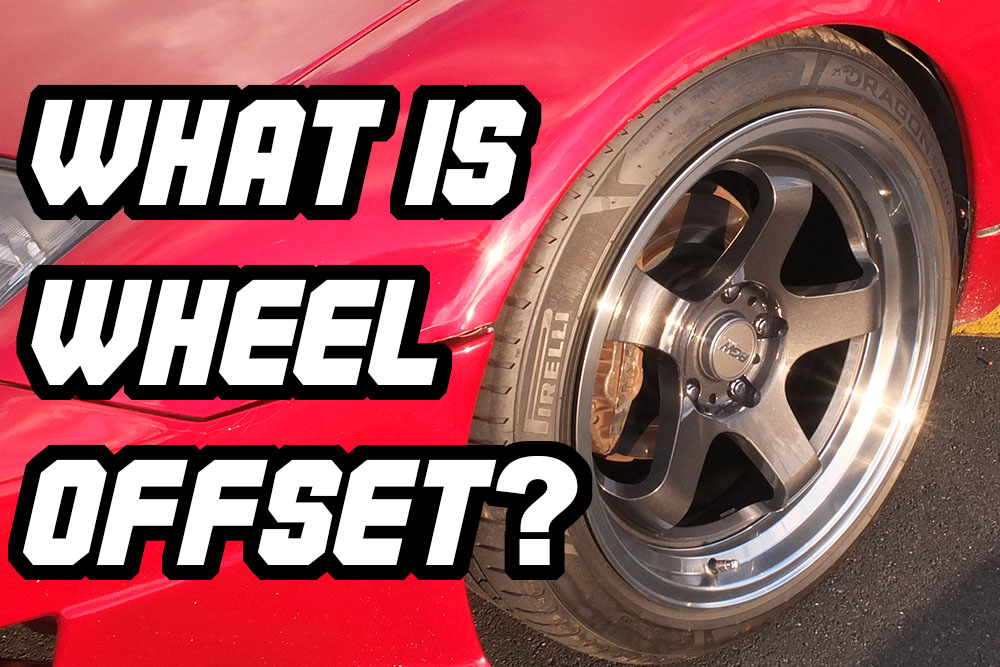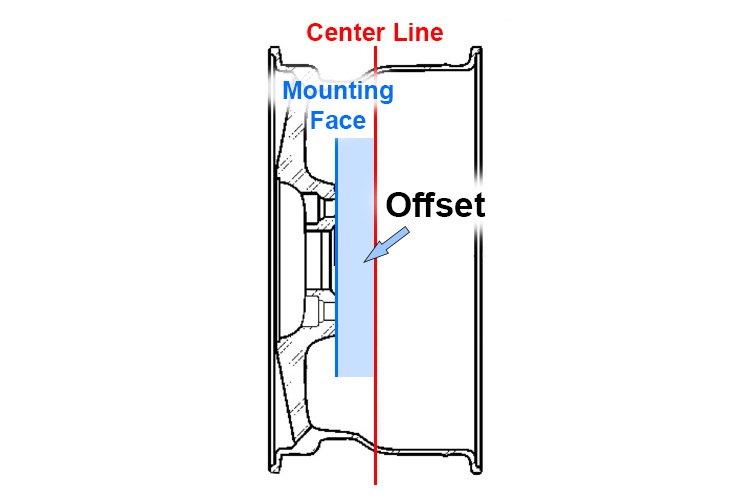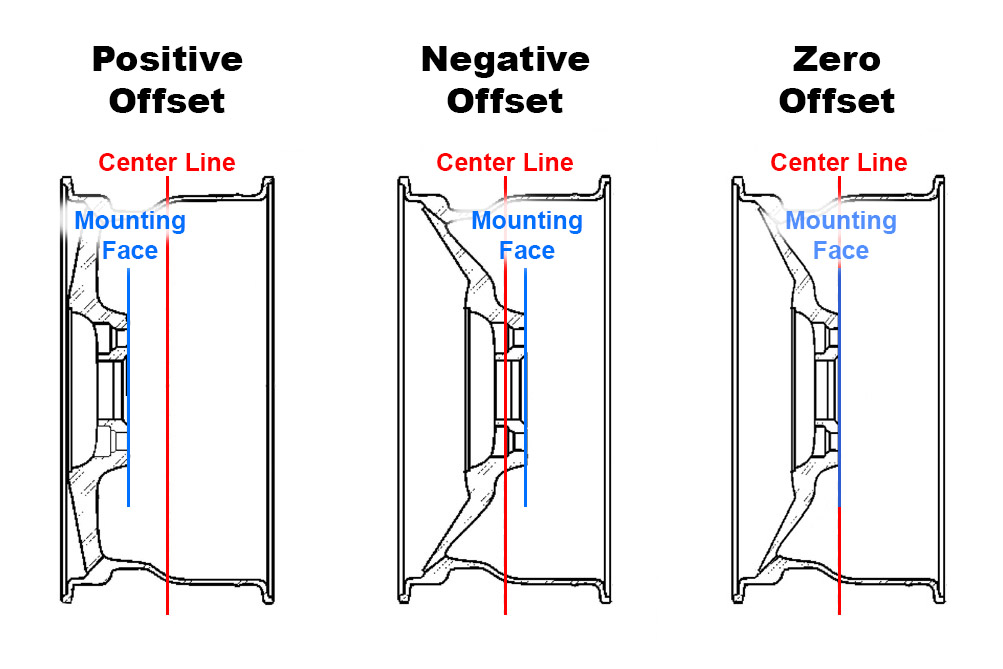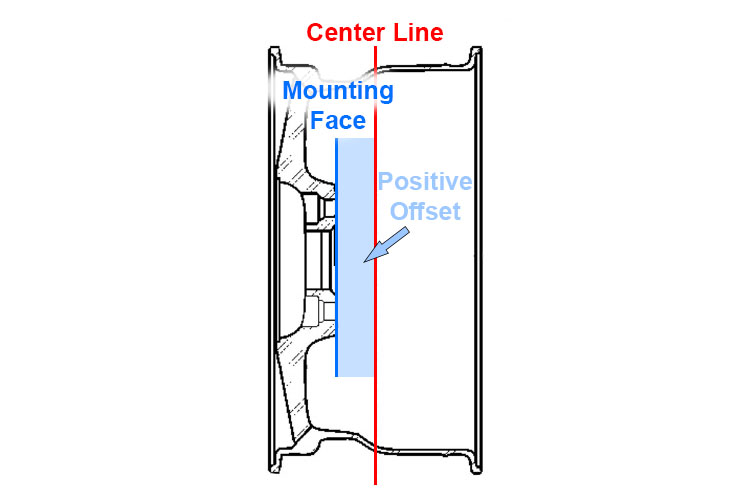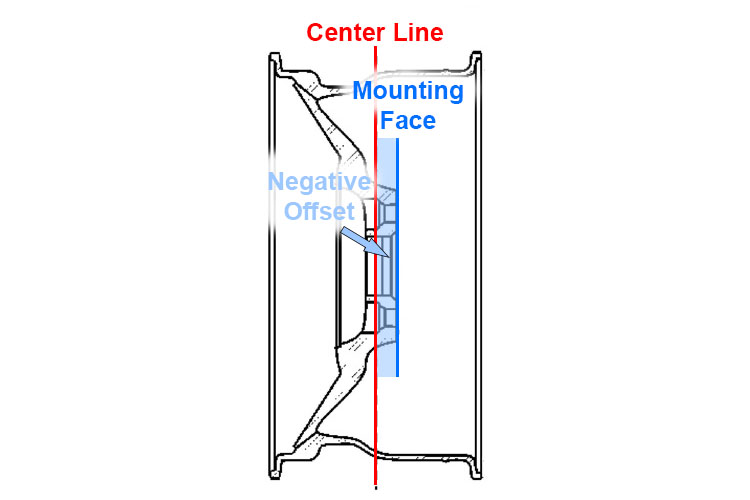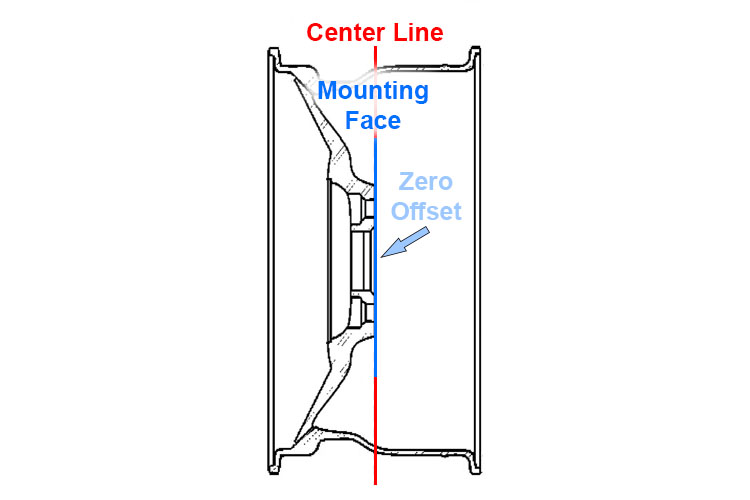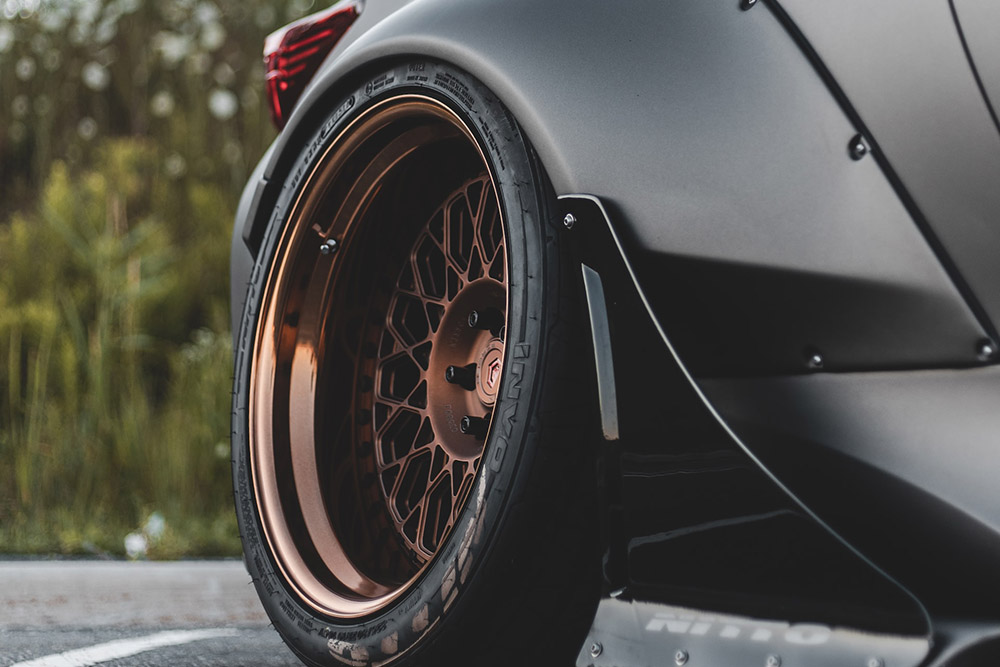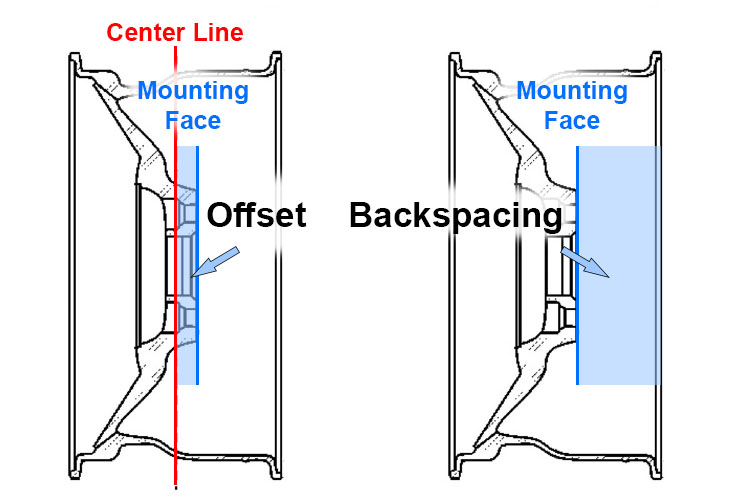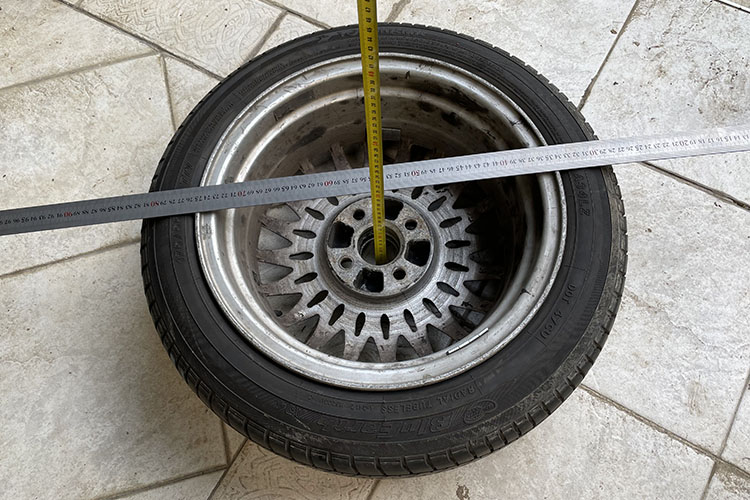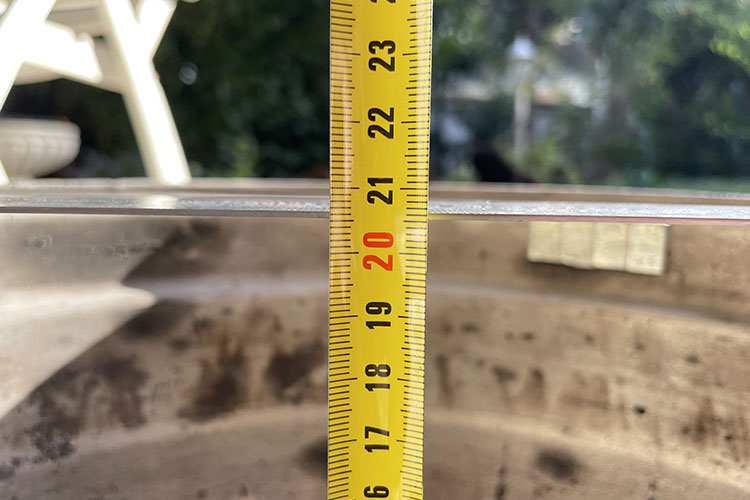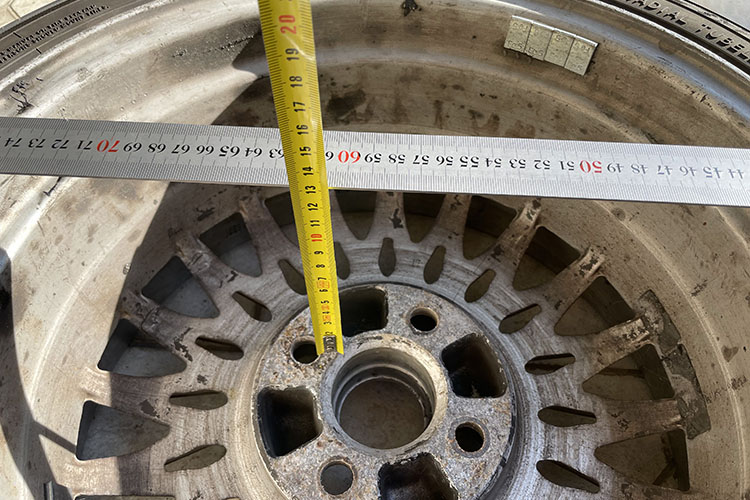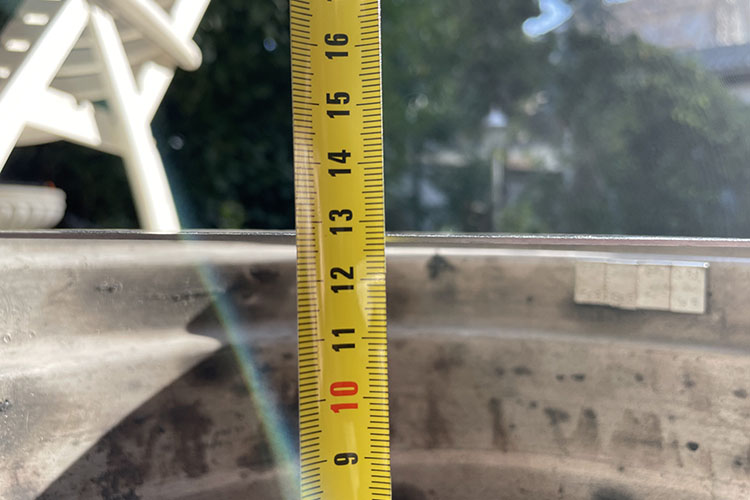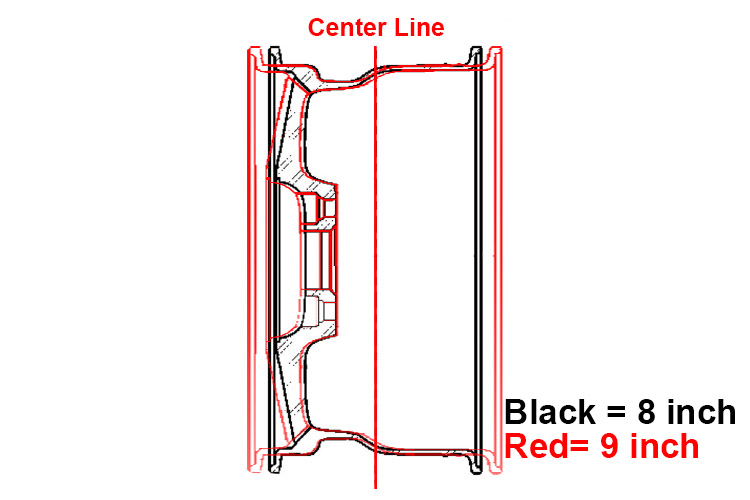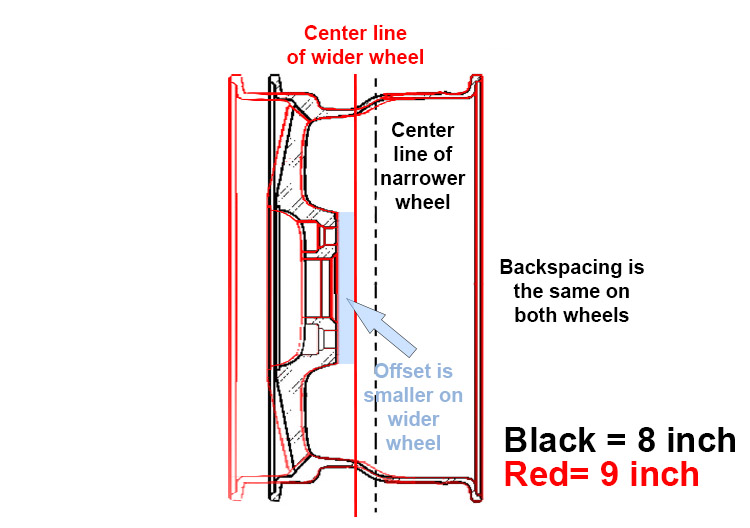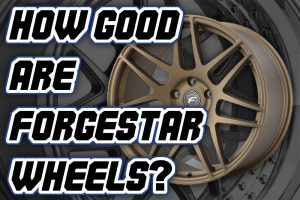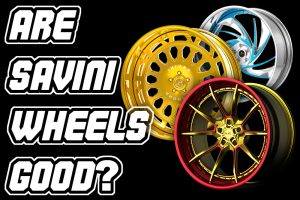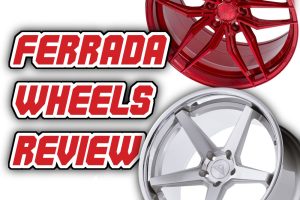What Is Wheel Offset? The Ultimate Guide to Selecting the Right Rim Offset For Your Car
If you are looking to buy new wheels for your car, you no doubt know that you need to select the right size in order for them to be able to fit on the car.
Most people understand how the diameter and width on a wheel works, but wheel offset is a bit more complex and can get confusing.
However, ensuring the wheels have the right offset is crucial to make sure that they will fit on the car and will sit how you want them to sit.
In this guide, I’m going to explain everything you need to know about wheel offset, what it is and how to calculate it, so that you will know which wheels will fit your car properly.
What Is Wheel Offset?
To put it very simply, wheel offset is how far in or out the wheel is going to sit on the car, in relation to the hub that it bolts to.
So if you were to look down the side of the car, the offset will dictate how far in or out the wheels will sit from the body of the car.
To put it in more technical terms, wheel offset is the measurement of the distance between the center line of the wheel and the mounting surface of the wheel that sits against the hub.
Wheel offset is always measured in millimeters and can be either positive, negative, or zero.
Why Change Your Wheel Offset?
There are two main reasons why most people change wheel offset:
- For aesthetic reasons
- For performance
Wheels that come from factory are often a very “safe” fitment, and people looking to get the most out of their car are usually not satisfied with this, so they go for wider wheels to make it look more aggressive and improve the handling.
In the case of wheel offset, this is one modification where you can actually achieve better looks as well as increased performance, up to a certain point.
Positive Vs Negative Vs Zero Wheel Offset
Wheel offset is always expressed as either positive, negative or zero offset, with a number to dictate the measurement. So for example, if the wheel is 42 offset, it means it has a positive offset of 42mm. If it is -20 offset, it means it has a negative offset of 20mm.
Here’s a diagram to show you the differences between wheel offsets, which I will explain below:
Don’t worry about the measurements yet, I will explain those a little bit later in this guide. For now we’ll just go over what the difference is between positive, negative and zero offset.
Positive Offset
Positive offset means that the mounting surface of wheel is further towards the front of the wheel, so that the wheel is going to sit further in on the car.
Negative Offset
Negative offset means that the mounting surface of the wheel is closer to the back of the wheel, so that the wheel will sit further out on the car.
Zero Offset
Zero offset means that the mounting surface of the wheel is exactly on the center line of the wheel.
Advantages of Positive Wheel Offset
Most cars that come out of the factory have a positive wheel offset. They are usually “safer” in that they are less likely to cause fitment problems with combined with wheels that are not particularly wide.
Easier to Turn the Wheels
Because the wheels sit further in on positive offset wheels, they make it easier to turn the steering wheel. This makes it easier for the average person to drive the car.
Reducing Torque Steer
On FWD cars, torque steer car occur when you press the gas and the car tries to pull you to one side. Higher offset wheels tend to reduce this, which is one of the reasons so many FWD cars come from factory with rather high positive offset wheels (40+).
Less Load on Bearings, Steering and Suspension Components
Positive offset wheels tend to put less load onto the steering and suspension components and wheel bearings than wheels with a negative offset. While this is usually not a major problem, you may notice parts failing sooner with lots of hard driving or regular track time.
Less Fender Rubbing Issues
Positive offset wheels sit further in on the car and are much less likely to rub on the fenders. This is generally an issue when installing wider wheels and tyres, so going with higher offset wheels can reduce the risk of the tyres rubbing on the body.
Disadvantages of Positive Wheel Offset
Less Stability
Because positive offset wheels sit further in to the body, they tend to make the car less stable than wheels that stick out further. This is due to having a narrower track width, which in turn reduces the stability. Picture a tall skinny box, versus a wide box with the same height. Which is more likely to topple over?
Worse Handling
With positive offset wheels, you will also notice a reduction in the handling of the car. Wheels that sit further in tend to result in less responsive handling than wheels that sit out further.
Clearance Issues With Brakes and Suspension
Too high positive wheel offset can also cause clearance issues with brakes and suspension components. This is especially true if you have installed larger brakes or wide wheels and tyres that may rub on the struts or control arms. You may also find that the wheels rub on the inside of the wheel wells at full lock.
Advantages of Negative Wheel Offset
Installing wheels with a negative offset or even a lower positive offset is popular among car enthusiasts for a number of reasons.
I should make it clear here that most cars won’t really allow you to install negative offset wheels on factory body work due to the lack of space (unless they are super narrow rims), but these benefits also apply to installing wheels that are lower offset than factory, even if it’s still positive.
Installing true negative offset wheels will usually require you to cut the stock fenders of the car and install a widebody kit, unless you like your wheels to poke out like mad (this is illegal in most places).
Can Fit Wider Tyres
While this is subjective to the particular car and the size wheels it has from factory, often times you will find that you can install wider, lower offset wheels that allow you to run wider tyres than the factory wheels will allow.
I’m sure we all know the benefits of wider tyres, which include more grip and traction which results in faster launch times as well as better handling.
Better Handling & Stability
Low or negative offset wheels will increase the track of the car, which in turn makes the car handle better and increases its stability.
This is especially true around corners, which is why you often see racecars with wide, deep wheels that have a low or negative offset.
Better Looks
When it comes to modifying cars, almost everything is a point of contention amongst enthusiasts of different styles. However, one thing almost every car enthusiast will agree on is that cars look better with wheels that fill the wheel wells in and sit more flush with the fenders (up to a point).
No matter whether you are into stance, track driving or low riders, lower offset wheels are usually the go-to choice.
More Clearance for Brakes and Suspension
Lower offset wheels give you more clearance behind the wheel where the suspension sits. They also tend to give you more clearance with the brake callipers, which is especially useful if you have installed a big brake kit.
The advantage of this is that you can fit bigger brakes, wider tyres and difference suspension components like coilovers without any interference.
Disadvantages of Negative Offset Wheels
Fender Rubbing Issues
One of the most common issues with low or negative offset wheels is that they tend to interfere with the body of the car, causing the tyres to rub.
This can generally be solved by either getting narrower tyres and stretching them on (not ideal for grip) or putting a widebody kit on the car.
While it is certainly possible to fit lower offset wheels on practically every car, not all wheels are going to fit, so make sure you find out if the width and offset of the wheels you are looking at is going to work.
Increased Load on Suspension & Steering Components
Lower offset wheels do tend to put more load on steering and suspension components such as wheel bearings and ball joints.
While this is not usually a major problem, you may notice increased wear and failure of these parts if the car is used for regular hard driving or track days.
How Much Negative Offset Is Too Much?
The answer to this is going to depend on the width of the wheel as well as the car you are putting them on.
Technically, there is no such thing as too much negative offset, but you can run into issues such as those mentioned above if you select wheels with too much of negative offset for your car.
If you are dead set on a set of wide, negative offset wheels and you are willing to do what it takes to fit them to the car, such as installing a widebody kit, then there really is no such thing as too much negative offset.
What is Wheel Backspacing?
Backspacing is another way to measure how the wheels are going to sit in relation to the mounting surface. While it gives you the same information as offset, it’s not to be confused with offset because the measurement is different.
Difference Between Offset and Backspacing
Offset is a calculation that uses the center line of the wheel to calculate how far from the center line of the wheel the mounting surface is.
Backspacing, on the other hand, is a simple measurement that tells you how far the mounting surface is from the edge of the lip on the back of the wheel.
Offset is usually a number between 0 and 60 on the extreme end (in millimeters), whereas backspacing will usually be a triple digit number.
How Can You Tell What Offset Your Wheels Are?
There are two ways to tell what offset your wheels are.
- Most wheels have the offset stamped onto them, usually on the back of the spokes, along with the diameter and width. It looks like this:
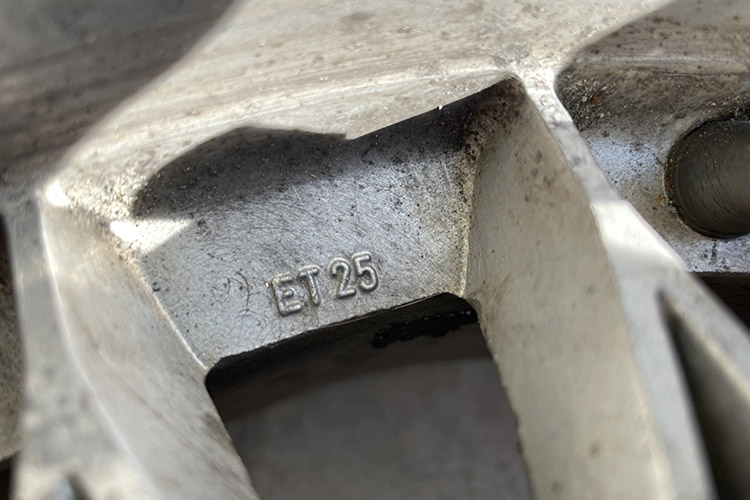
- Measure them manually to find out. Here’s how to do that:
How to Measure Wheel Offset
Earlier in this guide I mentioned measurements in relation to wheel offset.
Every wheel offset will be given to you as a number, for example 42 or -20, which will tell you exactly where the wheel is going to sit.
Here is how you measure the wheel offset.
1.Measure the Center Line of the Wheel
In order to do this, you will need a straight edge (metal) ruler and a measuring tape.
Lay the wheel on its face on the ground, and put the ruler across the top of the wheel. Now take the tape measure and place it vertically so that the edge of it touches the ground.
The measurement where the tape measure and ruler intersect will give you the width of the wheel.
In this case, it is 205mm. Divide this number by 2, and you have the center line of your wheel. So on this wheel it would be 102.5mm.
2.Measure the Backspacing
Keeping the ruler where it is, and take your tape measure and place the end of it on the mounting surface of the wheel.
Make a note of the measurement where the ruler and tape measure intersect, that’s your backspacing.
In this case its 127mm.
3.Calculate the Offset
To calculate the wheel offset, subtract the center line measurement from the back spacing measurement.
The difference between the backspacing measurement and the center line measurement of the wheel if your offset. If this number is positive, your wheels have a positive offset. If it’s negative, your wheels have a negative offset. If it’s 0, your wheels have a zero offset.
From the Example Above:
My wheels are 205mm wide. Half of that is 102.5mm (center line measurement).
The backspacing on my wheel is 127mm.
Backspacing – Center line = Offset.
Therefore:
127 – 102.5 = 25mm Offset.
Wheel Offset on Different Width Wheels
One important thing to note regarding wheel offset is how different wheel widths with the same offset will sit.
People tend to think that if the offset is the same on wheels with different widths, the back of the wheel will be in the same place and the front will stick out more on the wider wheel.
This is incorrect.
What will actually happen is the wheel will get stick out more on both the front and the back by half of the extra width.
Let me give you an example.
Let’s say you have a 8 inch wide wheel and a 9 inch wide wheel, both with an offset of 20.
The 9 inch wide wheel is going to stick out about 12mm more on the front, and 12mm more on the back. Here’s a diagram to help you visualize this:
If you want wheels that will have the same backspacing but stick out 1 inch more on the front, the 9 inch wheel would actually have to have a smaller offset for this to happen.
In the example above, the 9 inch wheel would have to be an offset of 8 to have the same backspacing as the 8 inch wheel with an offset of 20.
Be careful of this when choosing wheels, as many people get mixed up here.
How to Calculate Offset on Different Width Wheels So That the Backspacing Is the Same
If you want wheels that will have the same backspacing and stick out the extra width on the front, here is how you can calculate that:
Take the width and offset of the narrower wheel, let’s say it’s 8 inches wide and offset 20.
Let’s say the wider wheel is 9 inches.
The difference between 8 and 9 inches is 25mm.
You need to halve that difference in widths and subtract it from the offset of the narrower wheel.
In this case, half of 25mm is 12.5mm (let’s say 12mm to keep it simple), and the offset of the narrower wheel is 20.
So 20-12=8. You would need an offset of 8 on the wider wheel so that the backspacing of all the wheels is the same.
What Does ET Mean?
You will often find offset being referred to as ET before or after the offset number, for example ET20.
ET stands for “einpresstiefe”, which is a German word for “insertion depth”. Basically, ET is just the metric used to signify that a number is referring to the offset of the wheel.
If you take a look at the offset stamping on most wheels, they will say ET so that you know that is the offset measurement.
You can see that in the image I posted earlier:
Using Wheel Spacers to Change Wheel Offset
One way you can change the offset of a set of wheels is by using wheel spacers.
Wheel spacers are designed to “space” the wheel outwards, essentially making them have a lower offset without having to change wheels.
Wheel spacers are often used as a cheaper alternative to buying wider wheels for aesthetic reasons, as they can achieve the same aggressive look without spending thousands of dollars.
However, wheel spacers can also help with clearance issues. If you just bought a set of new wheels and you find that they are hitting the brake calipers or the tyres are rubbing on your coilovers, installing wheel spacers will push the wheels out slightly and make the room you need for them to fit.
Wheel spacers can be a good option if you really want a set of rims but they don’t quite fit and you need a few extra millimeters of clearance.
Some FAQ Regarding Wheel Offset
What Is Wheel Offset Measured In?
Wheel offset is always measured in millimeters.
What Is Reverse Offset?
Reverse offset is simply another way of saying negative offset. If wheels are referred to as reverse offset, it means they have a negative offset and usually have a deep lip or dish.
Does Positive Offset Push Wheels Out?
No, positive offset pushes wheels in so that they sit further into the car’s body. Negative offset pushes wheels out towards the fenders.
Does Negative Offset Move Wheels Out?
Yes, negative offset pushes the wheels out toward the fenders of the car. The lower the offset number, the more the wheels will stick out.
Does Offset On Wheels Matter?
Yes, offset on wheels matters just as much as width and diameters. If wheels do not have the right offset, they will not fit on your car.
What Offset Makes Wheels Stick Out?
Generally speaking, a low or negative offset is going to make wheels stick out, while a positive offset is going to pull the wheels further into the body. Any offset that is lower than the offset of the factory wheels is going to make the new wheels stick out more than the factory wheels.
Are Negative Offset Wheels Bad?
No, negative offset wheels are not bad. However, if the offset is too low compared to the factory offset of your car, they may not fit without extensive modification to the car’s body (such as a widebody kit or wider flares).
Can I Change the Offset On My Wheels?
Only 3 piece wheels and some 2 piece wheels allow you to change the offset by swapping the lips or barrels for a different size. Normal one piece wheels cannot change the offset. The only other way to change offset is to install wheel spacers, which will push your wheels out.
Do Wheel Adapters Or Spacers Change Offset?
Yes, wheel adaptors or spacers will make the offset lower by whatever thickness the adaptor or spacer is. For example, if the offset of the wheels is 40, and you put 20mm spacers, the new offset is going to be 20.
Does Changing Wheel Offset Affect Handling?
Yes, changing wheel offset will affect handling. Wheels with a lower offset tend to provide more stable and responsive handling as well as more tyre grip. Wheels with a higher offset provide less responsive handling and less stability.
- BC Racing BR Series VS Tein Flex Z Coilovers - April 15, 2024
- The Pros and Cons of Shock Body Vs Spring Perch Coilover Height Adjustment - April 13, 2024
- Monotube Vs Twin Tube Shocks: The Ultimate Guide - April 11, 2024

